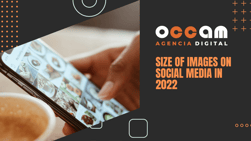Index Content
SEO positioning helps search engines like Google to find your website on the web. Therefore, a good SEO positioning is essential for users to see your website among the first options. Keywords are usually the main tool to achieve a good positioning, but they are not the only ones. Other resources, such as images, can help you in the same way or even more.
Search engines are giving more and more importance to images. For example, achieving a good positioning in the image search engine section (Google Images) is also a good way of positioning yourself that goes beyond a search for content. Attracting readers to your website through the image of an article is another way of increasing traffic to your page.
Below, we explain how you can improve your positioning through images.
Choosing a good image
The first thing to pay attention to is the content of your page or article. It is essential that the image chosen is the right one to obtain a good positioning. It must describe the main subject of the entry in which it is inserted or, in any case, expand on information. Choosing a more striking or more aesthetic image, but which does not correspond to the text it accompanies, is a mistake. The user who has reached the website through it will abandon the page immediately when they see that it is not what they were expecting.
Nor does it need to be a portrait of each of the aspects mentioned in the text. It is enough if it is simple, clear and graphically illustrates what you want to convey in words. The most important thing is that it is coherent with the subject.
Other aspects such as the weight of the image or the format are also important. A very heavy file can cause problems when it is uploaded (as well as taking longer). If an image is not uploaded correctly, it may not appear on our page or an icon may appear instead, indicating that there should be an image there. It is also often the case that what appears instead is a text, which we will talk about later.
As for formats, jpeg or png are some examples that can help you in the positioning of the image.
The name of the image
Although technology is advancing by leaps and bounds, search engines are still not able to read images. Paradoxically, the most important thing to achieve a good position is the text that accompanies them.
We must pay attention to two types of text: the name of the image and the alternative text. Let's start with the first one.
With the name of the image we refer to the name of the file. It is the title that a photograph has when it is taken or downloaded. To improve the positioning of the image, we must adapt the name of the file to the keyword of our article (renaming it if necessary, with the keywords separated by hyphens), for example, if our article is about content strategy, a good name for the image would be "Content-strategy".
The alt text
The alt text is the most important for the positioning of the image. It is also known as Alt Text, Alt Attributes or Alt Descriptions, and it is the text through which search engines will detect the image. As we said, search engines are not able to read images, and it will be the alt text that they will use to detect, read and position it.
The alt text has an HTML format like this: <meta name="twitter:image:alt" content="How to find your target market">.
Although most images already have alt text, it is part of the strategy that we edit it (you can learn how to edit alt text here). It should be no more than two or three sentences, including keywords.
It is essential that the image contains an alternative text, otherwise, the only thing that the search engine will detect will be "image" or "image". If you have a good Alt Text, the search engine will understand what the image represents, what is in it, and will rank it in the search results, contributing to a better SEO positioning.
However, alt text is not only important for positioning. An image with a bad ALT can cause an error when uploaded. In the same way, if an image has a good alt text and suffers a problem when uploaded, it can still be detected by search engines even if it appears graphically as an icon.
The University of Dayton illustrates this case as follows:
The alternative text is also what the screen reader detects. The read aloud function describes the image in words and uses the selected ALT for this purpose. Therefore, a good alternative text is also important, otherwise a part of the buyer personas will be lost.
Although we have referred to images so far, as it is usually the most used graphic element, alt text is also used to decipher formulas or infographics.
In short, the importance of the images included in the entries of a website goes far beyond the decorative element. They are an exceptional weapon to attract readers and users through a call for attention but, above all, they are a useful tool to position our articles. You can make a big difference in your statistics by incorporating these three tips in your layout routine. As they say, a picture is worth a thousand words.




